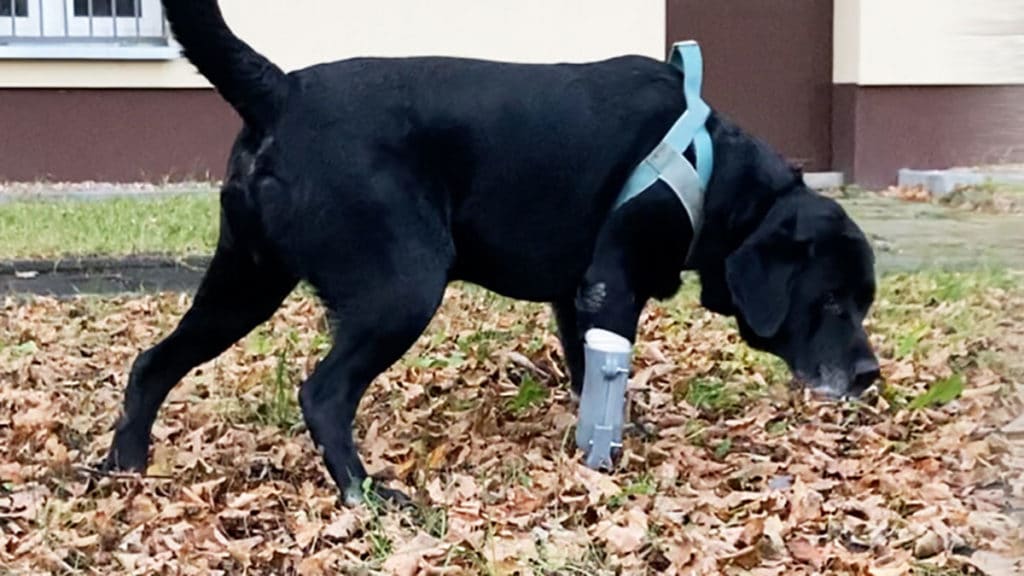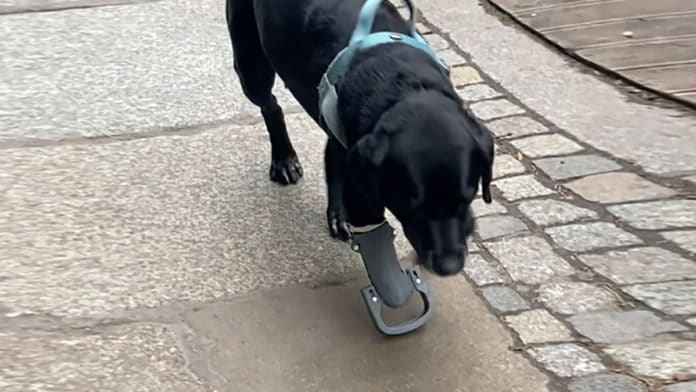3D printing technologies are constantly reaching new, niche areas where there’s a need for custom-built objects. Now, Maciej Szczepański, a fifth-year student of veterinary medicine at the Wrocław University of Environmental and Life Sciences in Polland, has successfully brought modern technology to the animal world with an incredible mission in mind.
With the use of a Zortrax Inventure, he designs and builds 3D printed prostheses for injured dogs, offering them a new lease on life.
While exploring the field of animal orthopedics and learning about the methods of helping injured animals, Maciej noticed that the usage of animal prostheses in Poland is not as equally promoted as, for example, in the United States. At this point, his idea to help animals has been brought to life.
“I wanted to create prostheses that would improve the quality of life of an animal that will be using it,” says Maciej, who kicked his project off by helping two dogs – Sonia and Leto – the victims of traffic accidents. Maciej starts the work on an artificial limb and uses alginate, a naturally occurring anionic polymer typically obtained from brown seaweed, to make an impression of the dog’s stump. The imprint is then filled with special ceramic plaster.

Next, the future vet 3D scans the obtained cast of a residual limb so that the 3D designer can prepare a digital 3D model. Having a 3D printer allows the student to test various levels of infill and evaluate the printed part’s durability.
Maciej uses screws to assemble the three components of the prosthesis together and puts a layer of cloth inside the 3D printed socket to increase the dog’s comfort. Now, the object is ready to be worn by the dog. “Thanks to 3D printing, I was able to create the tailored prostheses that suited the pet’s special needs,” the student says.
An interesting fact is that Leto only took a mere 15 minutes to get used to its new prosthesis, accepted it, and started to move in it almost like a healthy dog. The whole process of obtaining the ready prosthesis and passing it on to the animal in need takes no more than three days.
Maciej sees 3D printing as a tool that allows him to create highly customized items with minimized costs incurred along the process. He wants to expand his activity of delivering artificial limbs to injured dogs and is in the process of establishing a start-up company that will provide long-lasting support to animals with orthopedic problems.
